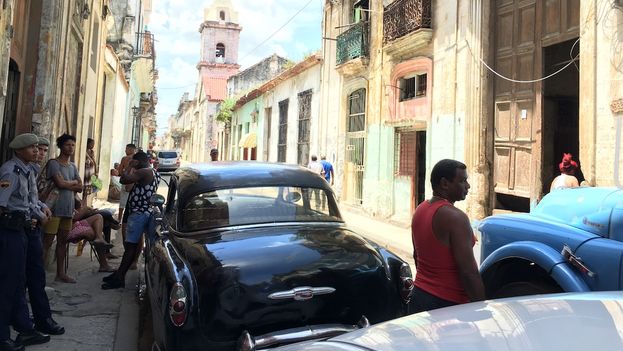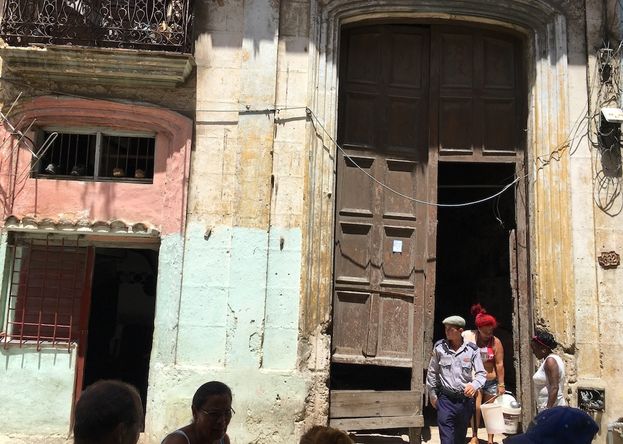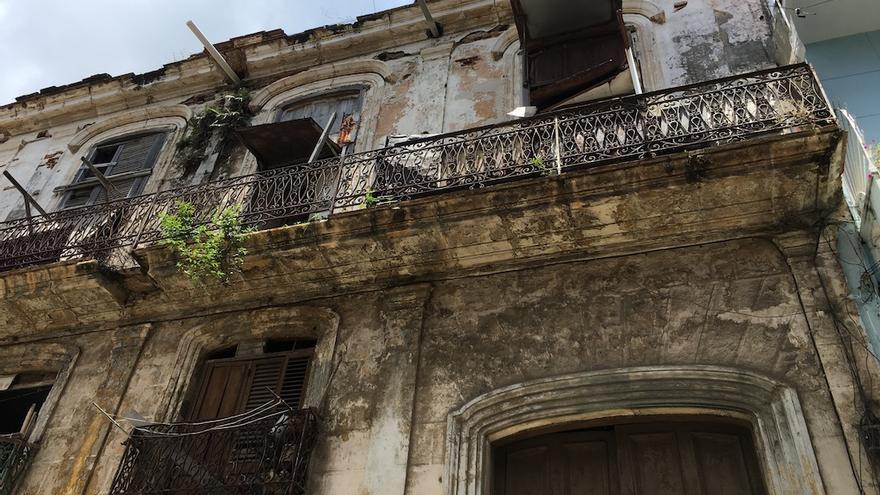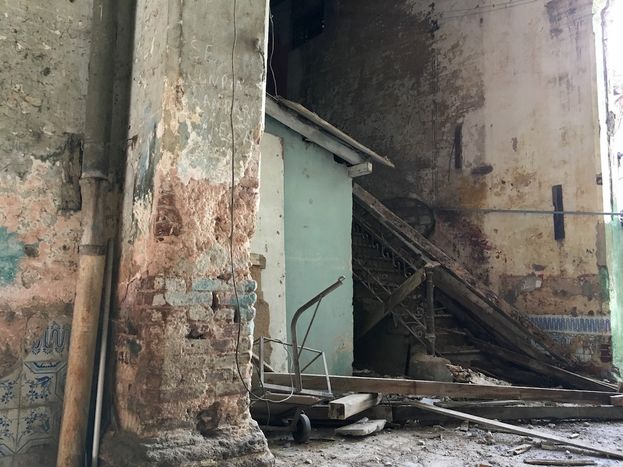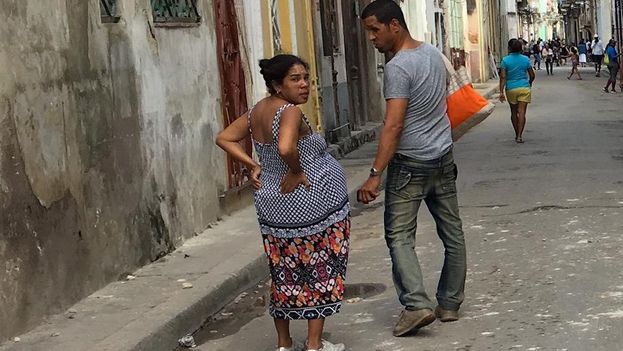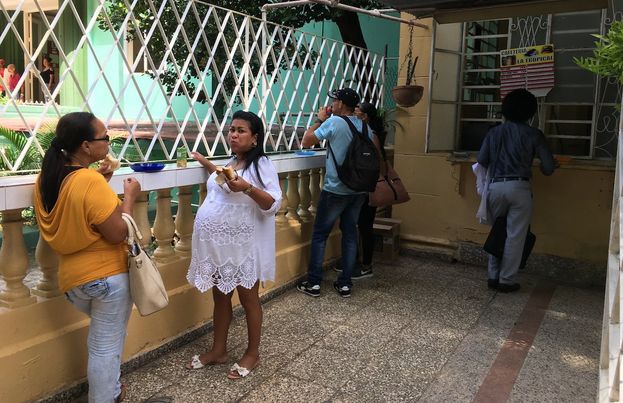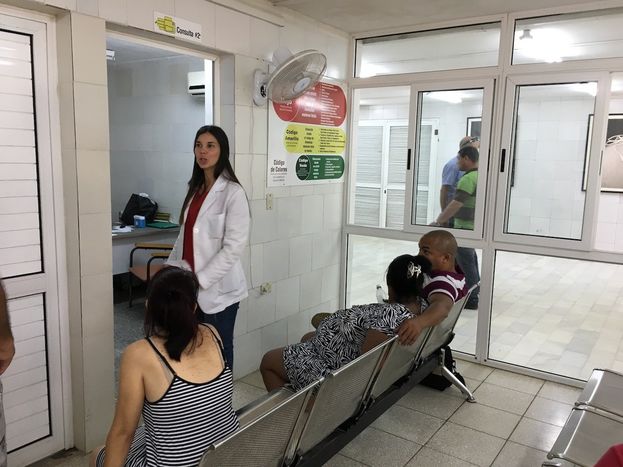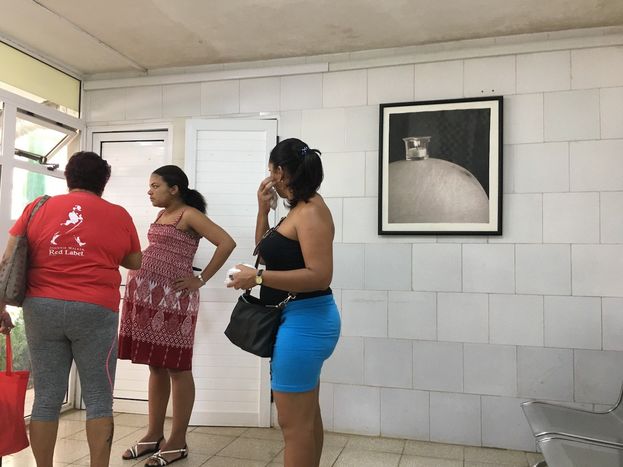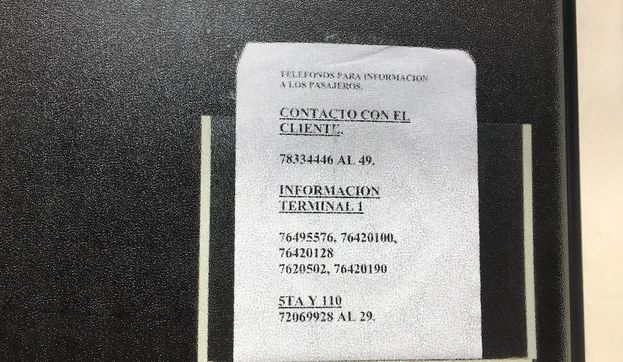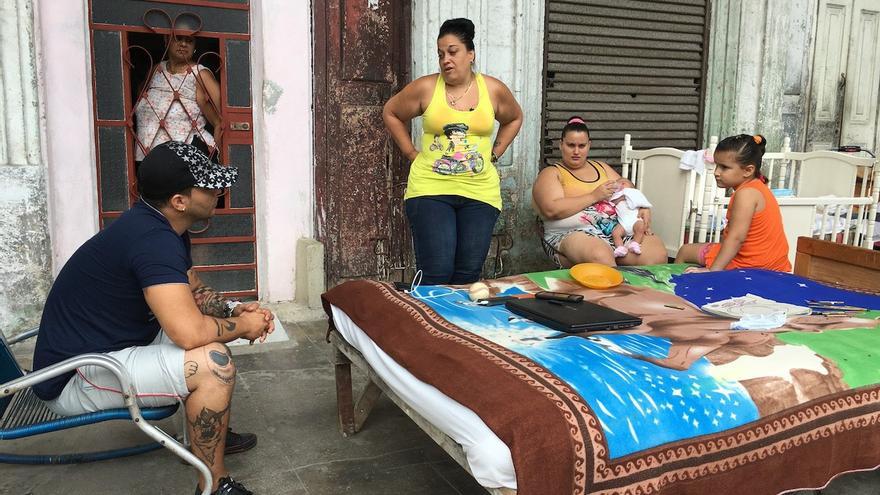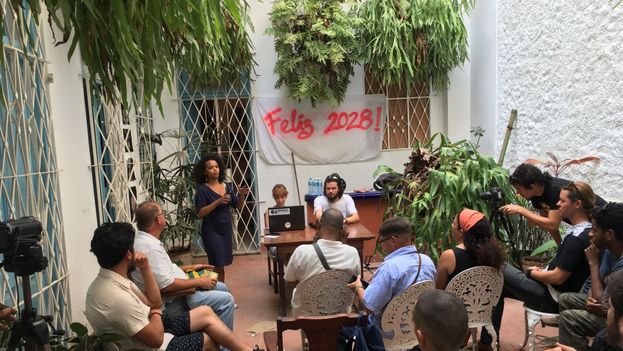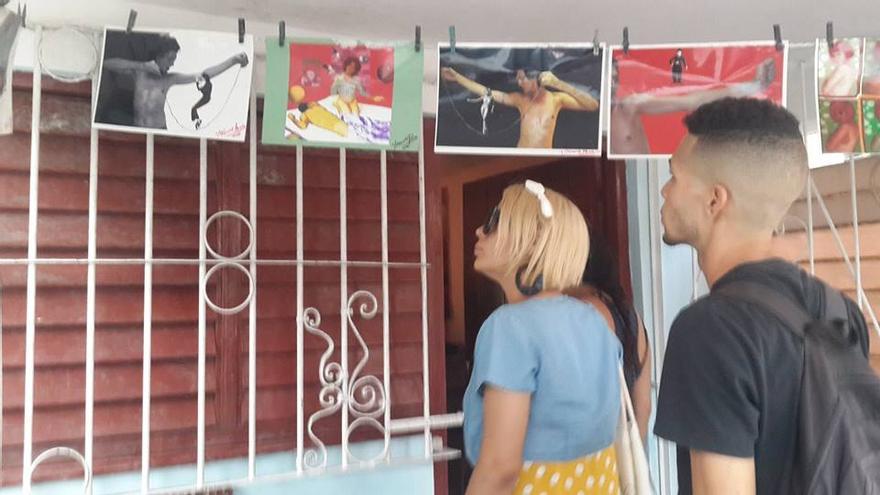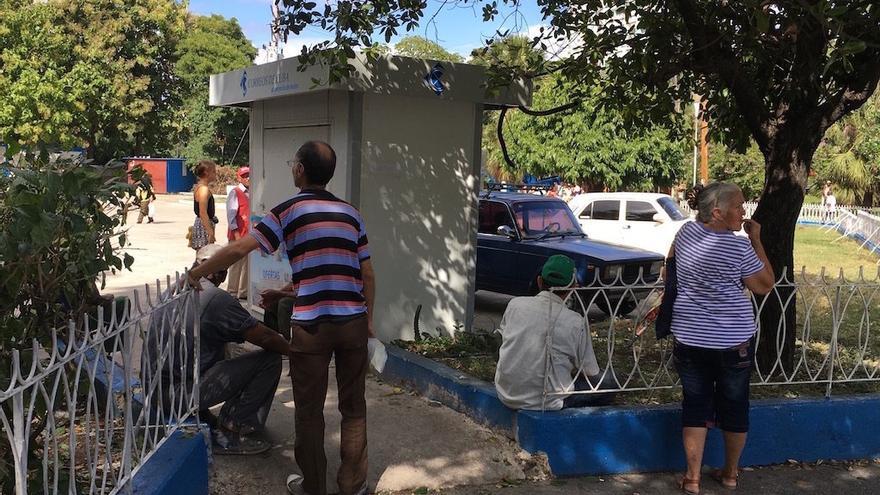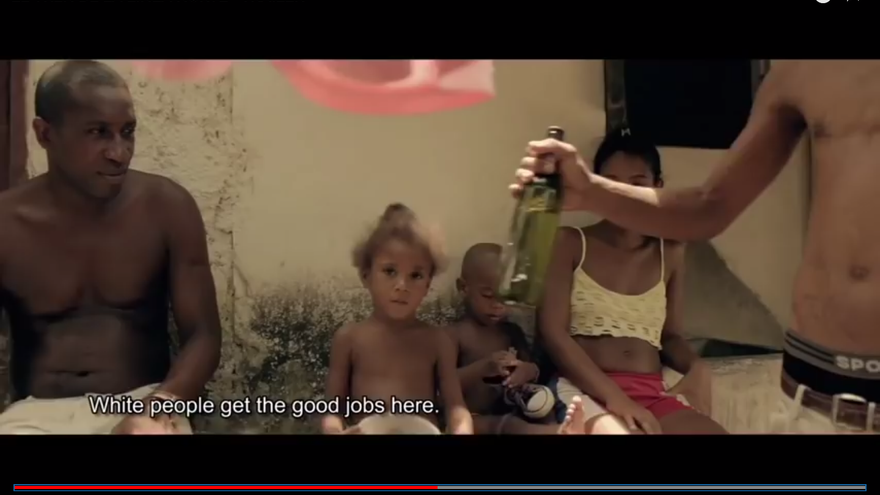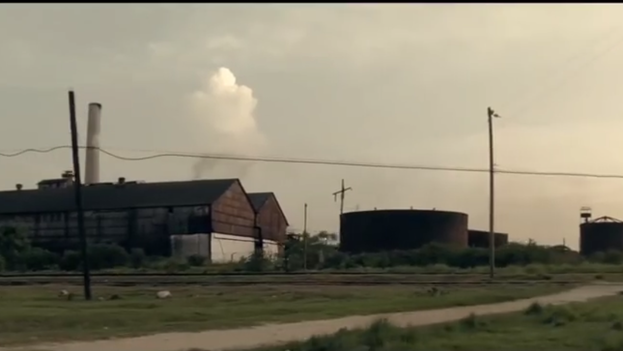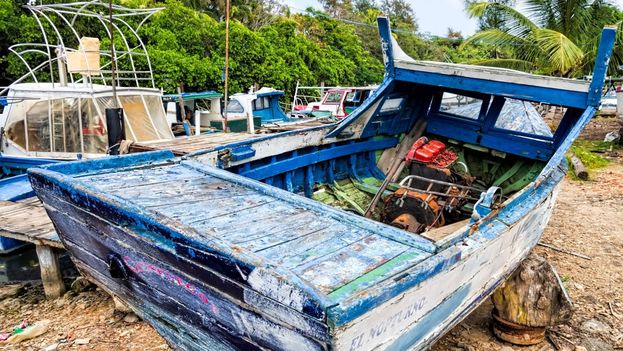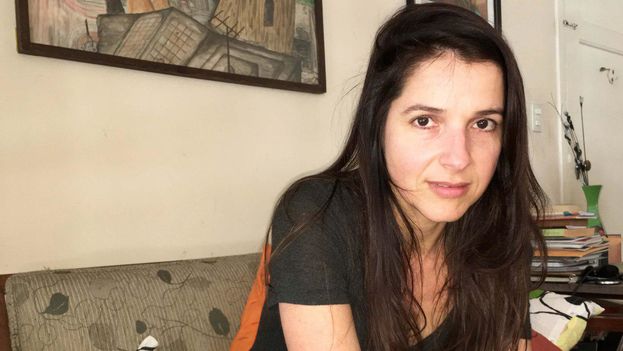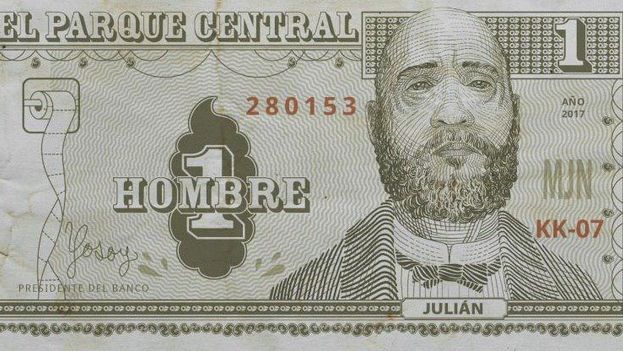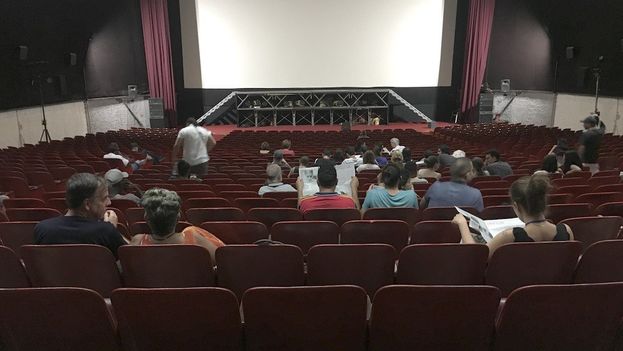![]() 14ymedio, Luz Escobar, Havana | 17 July 2018 – The shouting and singing of a hundred evangelicals who prayed in defense of the “design of the original family” was heard two blocks from the Methodist church located between K and 25th Streets in Havana’s Vedado neighborhood. A live band accompanied Pastor Lester Fernandez as he spoke to his flock in a ceremony broadcast live on the internet that lasted several hours last Saturday.
14ymedio, Luz Escobar, Havana | 17 July 2018 – The shouting and singing of a hundred evangelicals who prayed in defense of the “design of the original family” was heard two blocks from the Methodist church located between K and 25th Streets in Havana’s Vedado neighborhood. A live band accompanied Pastor Lester Fernandez as he spoke to his flock in a ceremony broadcast live on the internet that lasted several hours last Saturday.
In the pews there was no room for anyone else. From the crowded seats everyone raises their arms and sings, and at times they stand up and dance. “We know that this fast is not a fast without answers but with answers,” says the pastor and the believers give him a big ovation. continue reading
Fernandez said that in several countries in Europe laws have been passed to regulate unions between people of the same sex, which he attributed to a supposed weakness of the Church in those places. “Thanks to the Lord, our churches in Cuba are not like that and the Lord has prepared us for this moment, today more than ever, because we are a well-defined Church and the sin that is abhorred, we abhor,” he said.
On June 28, five Christian denominations issued a statement in which they expressed their rejection of a constitutional reform that would allow for equal marriage. Since then, opinions for and against have appeared in the independent press and social networks. “There are people who have confused what we are saying. There are people who believe that we are getting into politics or we are going to get into politics because we are going to hold a demonstration against the government. Today the Party is very nervous. We have people from State Security and independent journalists who are recording us but I am not afraid,” he tells his audience.
The pastor asked those who were present to “make it clear to the Government” that they were not afraid of them “because the Church is not going to depreciate itself, that our getting into politics is depreciating us.” He also said that they were not going to “sit idly by” in this matter, which, he said, will be solved with “fasting and prayer.”
Fernandez placed the number of people attending the fast at 800 — though this newspaper calculates it was about 500 — and said it was the largest congregation ever in the church.
It is still unknown how unions between same-sex couples will be regulated, but Mariela Castro, director of the National Center for Sex Education (Cenesex) and daughter of Raúl Castro, said that the issue would be promoted in the debates of the National Assembly, as a part of the constitutional reform.
The pastor explained that “more than 3,000 churches” prayed that day in their temples because they did not get permission to march on La Rampa. “How about if we pray for the National Assembly, How about if we pray for Raúl Castro, How about if we pray for Díaz-Canel and for Lazo? And even for Mariela Castro we are going to pray,” he encouraged the congregation. Fernandez asked the Cenesex director to “instead of what she is defending today, defend the true family bond.”
The march, called by the Assemblies of God, the Eastern and Western Baptist Conventions, the Evangelical League and the Methodist Church, was suspended, they said in a statement, because it overlapped with other activities. Although they said they are also working “with government leaders” to find a date and place for another “massive event” in the future.
“At this moment the churches in Cuba are carrying out this fast in favor of the family” closing the doors “before any attempt and every intention to make homosexualism and lesbianism (sic) formalized or legalized in Cuba,” he affirms. The pastor quoted passages from the Old Testament asking for a death sentence for homosexual relationships.
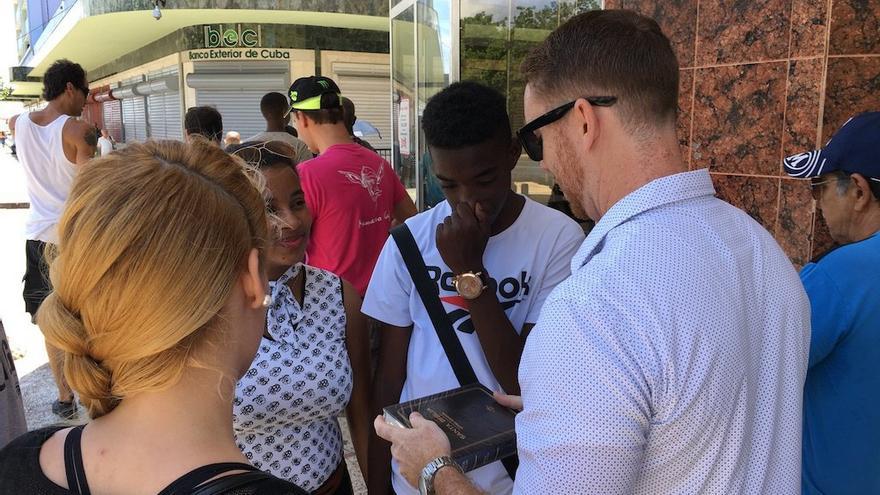
The pastor called on the faithful between the ages of 17 and 31 to go to La Rampa, the area of the capital in which, in his opinion there are more homosexuals, and to distribute bibles for free. “The young girls are given one of the pink ones and give the men the black ones,” he exhorted, while through a side door two boys left with several boxes full of Bibles of both colors.
The convocation took place minutes later when dozens of young people walked throughout La Rampa to fulfill the pastor’s request. Under the summer sun that embraced the city, at noon, some of the passers-by directly said that they did not want to know anything about the word of God, others listened with lowered heads and almost none showed the slightest enthusiasm.
The fast was copied in other municipalities of Havana and in several provinces of the country. In Holguin, dozens of faithful gathered at the entrance of a church to shout “viva!” while waving posters with a picture of what for them represents “the original family.” Similar scenes were repeated in Guantánamo and Pinar de Río.
Designer Roberto Ramos Mori feels that the posters that have appeared stuck on some electric posts and bus stops and that were displayed this Saturday in some churches, are “inciters of hatred and discrimination.” He asks, “If they [the government levies a] fine on me for doing it, shouldn’t the same thing happen to them?”
The Facebook page of the Afro-Cuban Alliance, an independent organization that fights against LGBTI discrimination, published some images of these posters warning that the intention of this campaign is “to go against the legalization of equal marriage in the constitutional reform.”
______________________
The 14ymedio team is committed to serious journalism that reflects the reality of deep Cuba. Thank you for joining us on this long road. We invite you to continue supporting us, but this time by becoming a member of 14ymedio. Together we can continue to transform journalism in Cuba.

